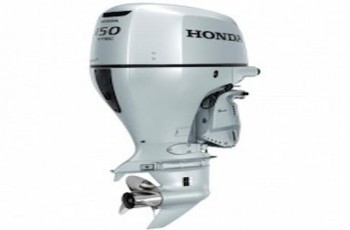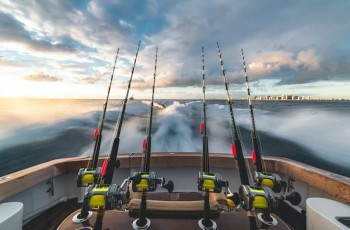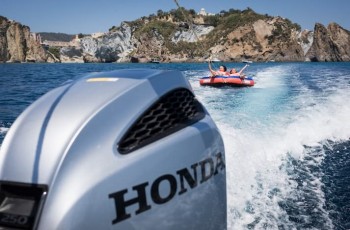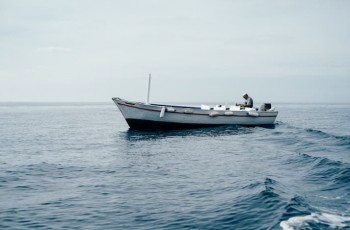Understanding the Differences Between Ships and Boats: Characteristics, Uses, and History
23 December 2023
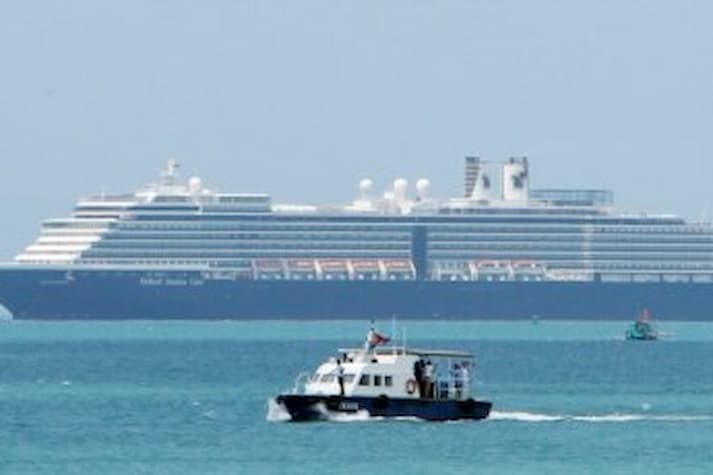
Some might think there's no real difference between ships and boats, perhaps just a matter of terminology. However, in reality, ships and boats have distinctions that Sobat Honda should be aware of. The variances lie in their characteristics, uses, and histories. This article will explore some of the disparities between ships and boats. Let's dive in!
The differences between ships and boats are manageable. Both are propelled by outboard motors, which Sobat Honda can find in Honda Power Products. These motors ensure high-quality and reliable performance, so there's no need for concerns or hesitations. Explore and learn more about the distinctions between ships and boats below.
What are Ships and Boats?
Before Sobat Honda learns about the differences between ships and boats, Sobat Honda needs to know the definitions of ships and boats themselves.
Read Also: 12 Types Of Sea Transportation In Indonesia, What Are They?
1. Definition of A Ship
A ship is a larger watercraft than a boat, typically designed to transport passengers goods or perform various water-related tasks, including long-distance voyages, warfare, offshore drilling, scientific research, and more.
Ships often have amenities such as cabins, engines, communication systems, and adequate safety equipment. They come in various types, from large cruise ships and massive cargo vessels to military submarines.
2. Definition of A Boat
A boat is a smaller watercraft in terms of weight and size than a ship. Boats are generally designed for use in shallower waters and for more specific purposes such as fishing, recreational sailing, transportation in small rivers or lakes, etc.
Boats have more superficial structures than ships, making their smaller sizes easier to operate. Even without engines, boats can be propelled using oars.
Differences Between Ships and Boats
Now, let's delve deeper into the differences between ships and boats Sobat Honda.
1. Size
The first distinction is size. Ships are typically larger than boats and can range from small vessels to large ones capable of accommodating thousands of passengers. In contrast, boats are smaller and usually only carry a few people.
Ships are often used in deeper waters like open seas and oceans, requiring larger sizes to handle more giant waves and harsh weather conditions. Conversely, boats are commonly used in shallower waters like rivers, lakes, and coastlines, benefitting from their smaller size to better operate in these environments.
2. Shape
The second difference is their shapes. Ships have varied forms, depending on their type. Seafaring ships typically have long and slender designs, while fishing vessels may have shorter and broader bodies. In contrast, boats usually have simpler and smaller structures.
Ships often have more complex designs, and some types are engineered for particular purposes. They are equipped with features such as cabins, powerful engines, and safety equipment. Boats, however, have more functional designs with limited variations.
3. Function
The functions of ships and boats are distinctly different. Ships are designed for various purposes, such as long-distance transportation, offshore drilling, warfare, scientific research, etc. Sobat Honda can use them for commercial, military, or recreational purposes.
On the other hand, boats typically serve more straightforward functions, such as fishing, recreational sailing, local transportation in shallow waters, or exploration of surface areas.
4. Material
The materials used for ships and boats also differ. Ships are constructed with more robust and durable materials like steel and aluminium. This is because ships are often used in harsh and diverse operational conditions, such as open seas, where they may encounter large waves, extreme weather, and saltwater.
In contrast, boats are frequently used in shallower waters like rivers, lakes, and coastlines, where they may not be exposed to similar conditions. Therefore, Sobat Honda can build boats with lighter and more affordable materials like wood, fibreglass, or plastic.
Uses of Ships and Boats
Ships and boats have different uses, depending on their capacity and size. Ships generally have larger cargo capacities and sizes and are designed to transport large quantities of passengers or goods, as in cargo ships that carry mass amounts of goods.
Conversely, boats are smaller and used for limited purposes, including fishing, recreational sailing, or local transportation in shallow waters. It makes crafts more suitable for small vacations with family or friends.
1. Ship Uses
Ships are used for various purposes, such as:
-
Transportation of Goods: Ships are used to transport goods from one place to another.
-
Passenger Transportation: Ships transport passengers from one place to another.
-
Naval Warfare: Ships are used by navies for national defence.
-
Cruise Ships: Ships are used for tourism and recreation.
2. Boat Uses
Boats are used for various purposes, such as:
-
Fishing: Boats are used by fishermen for catching fish.
-
Water Sports: Boats are used for water sports such as rowing and boat racing.
-
Recreation: Boats, such as fishing trips and leisurely cruises, are used for recreational purposes.
History of Ships and Boats
The history of ships and boats reflects humanity's long journey in overcoming the challenges of water to sail and explore the world. From simple wooden boats used by ancient civilizations to sophisticated modern sea vessels, this evolution mirrors technological advancements, exploration, and trade over the centuries. Let's explore the history of ships and boats through the ages below.
Read Also: 9 Traditional Sea Transportation From Past To Present
1. Prehistoric Era
Boats are the simplest type of watercraft and were likely the first tool humans used for navigation. Early boats were crafted from wood, animal skins, or clay. Prehistoric humans utilized them for hunting, fishing, and travelling on rivers and lakes.
2. Ancient Times
In ancient times, ships and boats served various purposes, including trade and exploration. Old vessels were typically wood-made and powered by human or wind energy.
One civilization notable for its maritime advancements was Ancient Egypt, which used ships to navigate the Nile River and to transport large stones for pyramid construction.
Ancient Greece also played a significant role in naval history, developing robust and fast ships known as triremes. These were used in naval battles and trade expeditions.
3. Medieval Period
Ships and boats were used for war and trade during the medieval period. Vessels in this era were generally more extensive and robust than in ancient times.
The 15th to 17th centuries are known as the Age of Exploration, during which European nations like Spain, Portugal, and England sent large ships to explore new territories. Caravels and galleons were used for ocean exploration and trade.
4. Industrial Revolution
In the 19th century, the Industrial Revolution brought significant changes to shipbuilding. Iron and later steel ships became widespread in trade and navigation, replacing sail-powered ships with steam-powered ones. Steamships became the primary mode of propulsion.
5. Modern Era
In the modern era, ships and boats have undergone rapid developments. Modern vessels are equipped with advanced technologies, including diesel and gasoline-powered engines. They are utilized for various purposes, such as transportation, warfare, and tourism.
In the 20th century, we witnessed the emergence of powerful modern warships, including aircraft carriers, submarines, and surface warships equipped with advanced technology. Ship and boat manufacturing today is tailored to specific needs and uses.
In conclusion, ships and boats exhibit different characteristics, uses, and histories. They are crucial water transportation tools that have played significant roles in human life.
Read Also: Types Of Boats And Their Functions
Moreover, with advancing technology, many ships and boats now come equipped with various types of engines, with outboard motors provided by Honda Power Products being one example.
Honda Power Products offers sophisticated outboard motors with special features for those interested in purchasing them. If Sobat Honda has any uncertainties or questions about buying an outboard motor, the Honda Power Products team can provide clarification.
So, don't wait any longer. Get high-quality and reasonably priced outboard motors from Honda Power Products now!

Honda Power Products Indonesia
Honda Power Products menyediakan mesin serbaguna, generator, pemotong rumput, pemotong sikat, pompa air, dan mesin tempel.

